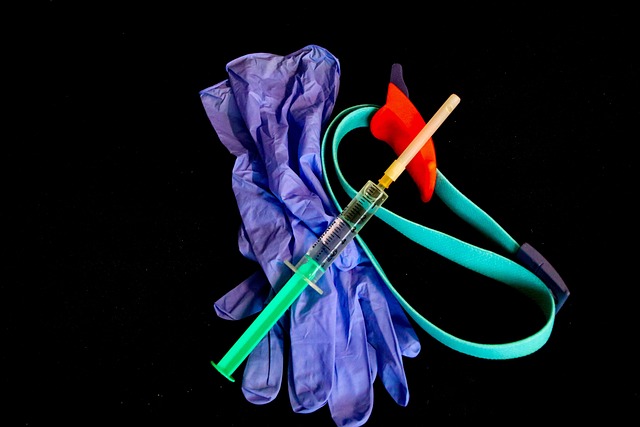Corticosteroid joint injections provide rapid pain and inflammation relief for arthritis and similar conditions, but overuse can harm joints. Optimal frequency is 3-4 times per year, with scheduling tailored by healthcare experts based on patient needs and condition type. Regular monitoring by medical professionals post-injection is crucial to manage side effects and maintain joint health.
Corticosteroid joint injections are a common treatment option for various inflammatory conditions. But how often is too often? This article delves into the optimal frequency of corticosteroid injections, highlighting critical safety guidelines and factors influencing spacing. From understanding the procedure to monitoring your health, we explore best practices for ensuring efficacy while minimizing risks associated with these powerful anti-inflammatory treatments, focusing on corticosteroid joint injections.
Understanding Corticosteroid Joint Injections
Corticosteroid joint injections are a common treatment for various inflammatory conditions affecting joints, such as arthritis. These injections deliver a combination of cortisol, a powerful anti-inflammatory hormone, and a local anaesthetic into the affected area to reduce pain, swelling, and stiffness. The frequency of these injections varies depending on the individual’s condition and response to treatment.
Generally, corticosteroid joint injections can be administered every 3–6 months, but this interval may be adjusted by a healthcare professional based on the patient’s specific needs. It’s important to understand that while these injections offer significant relief, they are typically considered a short-term solution due to potential side effects associated with prolonged cortisol use. Regular monitoring by a medical expert is crucial to ensure optimal treatment outcomes and minimize risks.
Frequency Guidelines for Safety
The frequency of corticosteroid joint injections is a crucial consideration for safety and effectiveness. While these injections can provide rapid relief from inflammation and pain, overdoing them can lead to adverse effects such as joint damage, tendon weakness, and suppression of the body’s natural immune response.
Generally, healthcare professionals recommend no more than 3-4 corticosteroid joint injections per year. This guideline helps maintain a balance between managing pain and preserving joint health. It’s important to remember that each injection carries risks, and the decision on frequency should be made in consultation with a qualified medical practitioner who can assess your specific condition and needs.
Factors Influencing Injection Spacing
The frequency of corticosteroid joint injections depends on various factors, each playing a crucial role in determining the optimal injection spacing. One of the primary considerations is the patient’s condition and response to previous treatments. For acute inflammatory conditions, such as bursitis or tendinitis, injections may be given more frequently at the beginning of treatment to swiftly reduce inflammation and pain. Over time, as the condition improves, the injection schedule can be adjusted to a maintenance dose, spaced further apart.
Chronic conditions, in contrast, might require less frequent but sustained injections. The goal is to manage symptoms effectively while minimizing potential side effects of repeated steroid exposure. Factors like the patient’s age, overall health, and the severity of their condition influence this decision. Additionally, the type of joint involved can also dictate injection frequency; larger joints, for instance, may benefit from less frequent but targeted injections due to their lower risk of adverse reactions compared to smaller, more sensitive areas.
Monitoring and Following Medical Advice
Monitoring and adhering to medical advice is crucial for individuals receiving corticosteroid joint injections. After each injection, patients should schedule regular check-ups with their healthcare provider to monitor any potential side effects or signs of degradation in joint health. These follow-up appointments allow doctors to assess the treatment’s effectiveness and make informed decisions about future injections.
It’s important to remember that the frequency and number of corticosteroid joint injections are tailored to each patient’s specific condition and response to treatment. Medical professionals will guide patients on the appropriate interval between injections, ensuring optimal relief while minimizing potential risks associated with repeated steroid use. Following their doctor’s advice closely is vital for managing joint pain and inflammation effectively.
Corticosteroid joint injections can provide significant relief, but it’s crucial to follow frequency guidelines and monitor your condition. The spacing between injections depends on various factors, including the severity of inflammation and individual response. Generally, these injections are recommended every 4-6 months, but a qualified healthcare professional will determine the optimal timing based on your specific needs. Always adhere to their advice and regularly assess your joint health for safe and effective treatment with corticosteroid injections.
